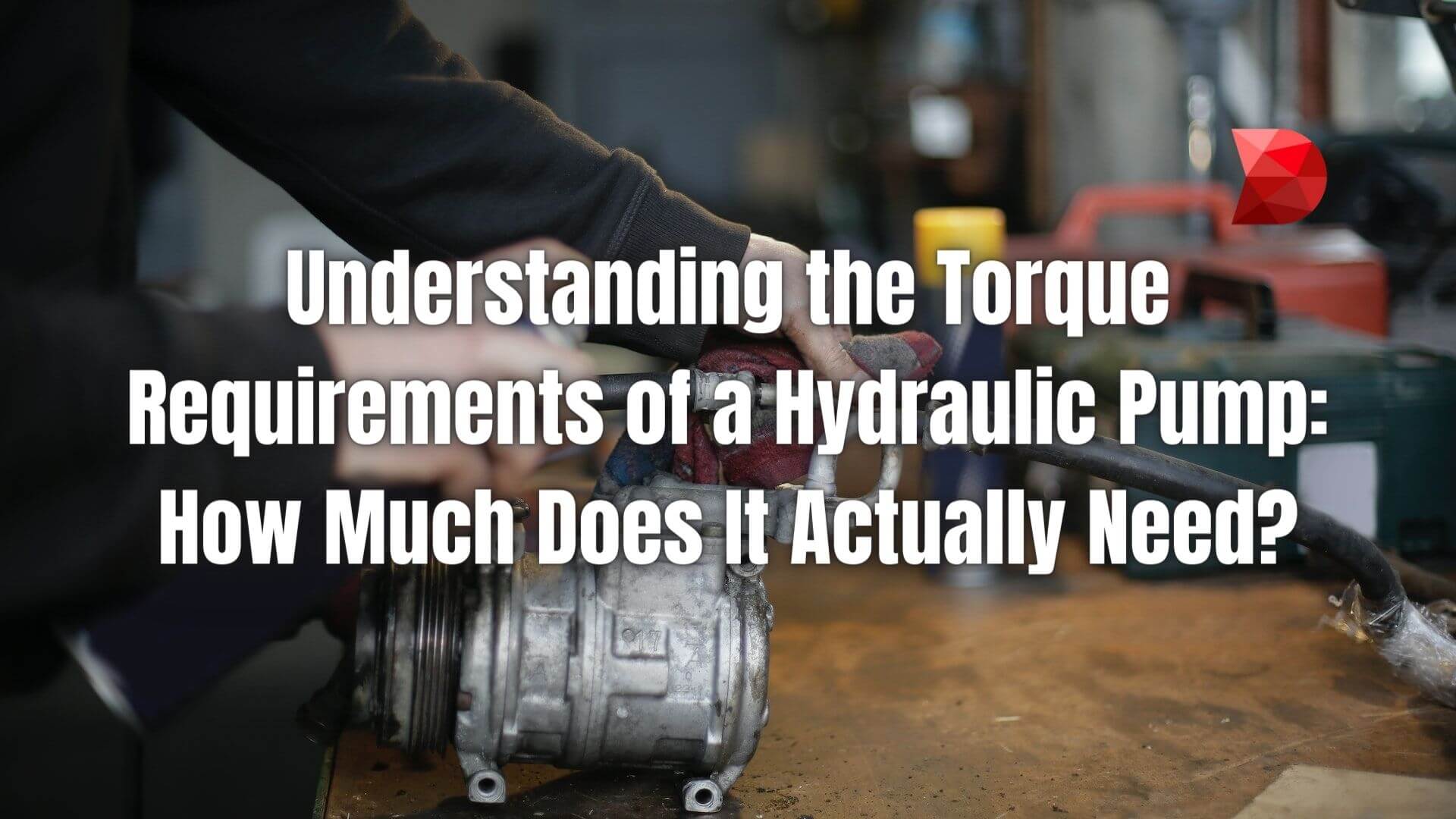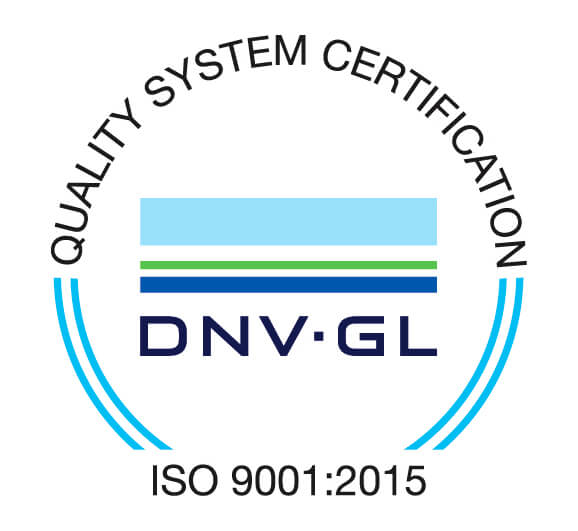When embarking on a project that requires a hydraulic pump, one key parameter that requires careful consideration is the amount of Torque. Recognizing Torque’s essential role in the operation of hydraulic pumps can mean the difference between a smoothly running system and one riddled with inefficiencies.
This article will provide insights on the fundamental aspects of Torque in hydraulic pumps, helping you make an informed decision for your project. We will focus on the concept of hydraulic motor torque calculation—a critical factor in understanding and optimizing the performance of your hydraulic pump.
Table of Contents
ToggleWhat is a Hydraulic Pump?
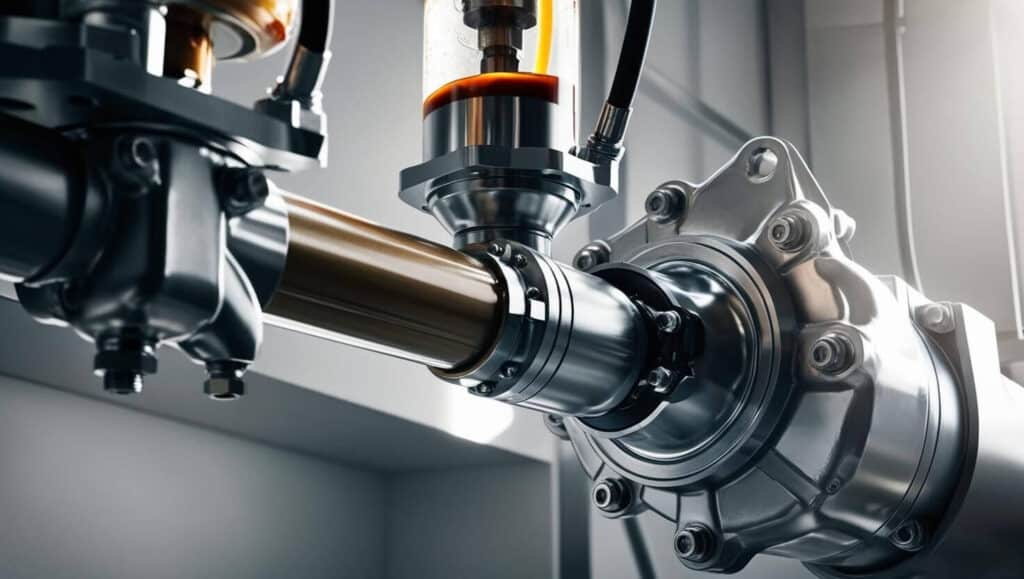
A hydraulic pump is a mechanical device that transforms mechanical power into hydraulic energy with remarkable efficiency and precision. It serves as a crucial component in various applications, enabling the seamless conversion and utilization of power in hydraulic systems.
A hydraulic pump efficiently generates a powerful flow, overcoming the pressure caused by the load at the pump outlet. This industrial tool is used across various sectors, including construction, agriculture, and manufacturing, to move fluid through a system and control and transmit power.
When working with hydraulic pumps, understanding the specifics of hydraulic motor torque calculation becomes essential, as the amount of Torque a pump requires directly impacts its efficiency and effectiveness. That’s why it is crucial to determine the right amount of Torque for your pump.
How does a Hydraulic Pump Work?
A hydraulic pump operates on the principle of displacement, which involves the creation of a vacuum at the pump inlet, allowing atmospheric pressure to force fluid from the reservoir into the inlet line leading to the pump. When the pump’s mechanism moves back, it pushes the fluid into the outlet and the hydraulic system.
The operation of a hydraulic pump is relatively simple. The pump’s rotating group or impeller draws the hydraulic fluid through the inlet port into the pump casing, creating a vacuum. The fluid is then trapped by the pump mechanism and forced through the outlet into the hydraulic system.
It’s worth noting that there are different types of hydraulic pumps – gear, piston, and vane pumps, each with its unique operational mechanism. Regardless of the type, they all convert mechanical energy to hydraulic energy, and the amount of Torque required for this conversion process determines how efficiently they operate. Hence, a proper understanding of hydraulic motor torque calculation is paramount.
What is Torque, and How Does it Relate to Hydraulic Pump?
In simplest terms, Torque is a measure of the force that can cause an object to rotate around an axis. It is one of the fundamental aspects of all rotating objects. In the context of a hydraulic pump, Torque is the force that enables the pump to move hydraulic fluid from the inlet to the outlet, generating hydraulic power.
Where the Relationship Lies
The relationship between Torque and hydraulic pumps lies in the operation of the pump itself. The hydraulic pump uses the motor’s mechanical force, or Torque, to move the hydraulic fluid. The amount of Torque needed by a hydraulic pump is directly proportional to the amount of hydraulic power it produces. More Torque means the pump can generate hydraulic power and move more fluid.
Calculating Hydraulic Motor Torque
The calculation of hydraulic motor torque is, therefore, a key step in ensuring the optimal performance of a hydraulic pump. You can choose the right motor and prevent overloading the pump, which can result in inefficiencies and system failures, by knowing how much torque your hydraulic pump needs.
The hydraulic motor torque calculation primarily involves pressure (P) and displacement (D). The formula used is as follows:
Torque (T) = Pressure (P) x Displacement (D) / (2π)
This calculation ultimately provides an accurate measure of the Torque necessary for your hydraulic pump. By understanding and correctly applying these calculations, you can optimize your pump’s performance and ensure it runs efficiently.
Torque Specifications
Hydraulic pumps play a crucial role in various applications, providing the necessary power to move fluids efficiently. One important aspect to consider when selecting a hydraulic pump is the Torque required for its operation. This article will delve into torque requirements in hydraulic pumps, exploring the different types of pumps and their corresponding torque needs.
Types of Hydraulic Pumps and their Torque Requirements
- Manual Pumps: Manual pumps, commonly used in smaller systems, require a relatively low torque for operation. Typically, these pumps necessitate 1-2 foot-pounds (1-2 Nm) of Torque. Manual pumps are still effective in many applications despite their low torque requirements.
- Electric and Automatic Pumps: Electric and automatic pumps have even lower torque demands than manual pumps. These pumps usually require 0.5-1 foot-pounds (0.5-1 Nm) of Torque. Their efficient operation makes them suitable for various scenarios, including those where precision and consistent performance are essential.
High Torque Pumps for Industrial Applications
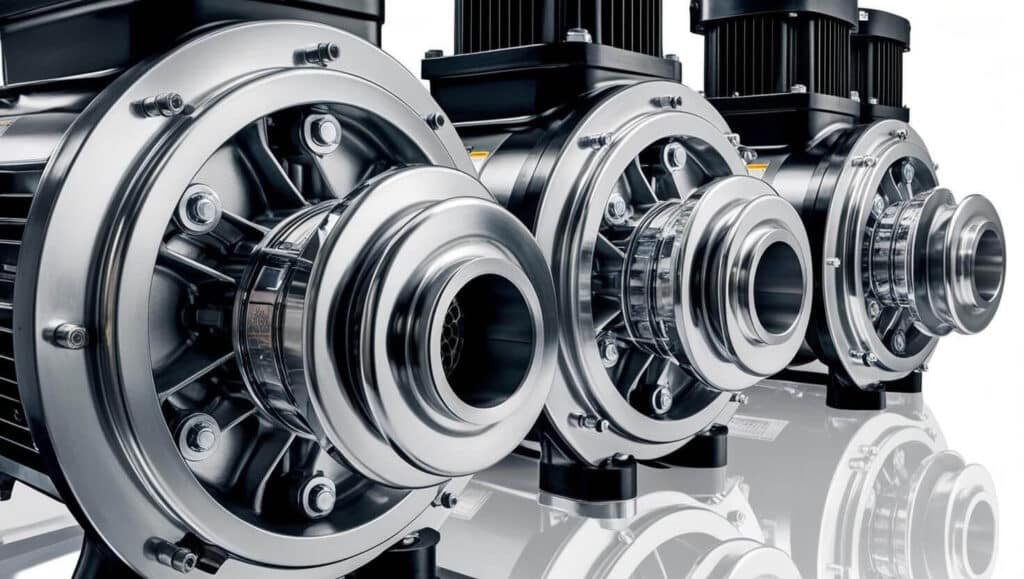
In some industrial applications, the demand for higher fluid volumes necessitates pumps with higher torque requirements. To meet these demands, pumps with larger motors are employed. These high-torque pumps can generate more power, ensuring the efficient movement of fluids even in demanding environments.
Understanding the torque requirements of hydraulic pumps is integral in selecting the right pump for a specific application. Whether it’s a manual pump for smaller systems or an electric pump for precise operations, considering torque needs ensures optimal performance.
In industrial settings, high-torque pumps with larger motors provide the power required for handling larger volumes of fluid. Hydraulic pumps can be effectively utilized in various industries by matching the torque requirements to the intended application.
What’s the Specific Amount of Torque Required for a Pump?
For a hydraulic pump to operate correctly, it requires a specific amount of Torque, usually between 10 to 12 foot-pounds. However, this value can vary depending on the pump type and application.
Now, what sets apart a hydraulic pump from a mechanical pump? A hydraulic pump utilizes hydraulic fluid as its power source, whereas a mechanical pump relies on mechanical energy. In terms of efficiency and longevity, hydraulic pumps generally outperform mechanical pumps, offering greater efficiency and longer lifespans.
How to Calculate the Torque Needed for a Particular Pump?
Calculating the Torque needed for a particular hydraulic pump involves the application of a straightforward formula, as mentioned above:
Torque (inch-pounds) = RPM x Volume (gallons per minute)
Each part of the formula bears particular significance:
- Torque (T): We want to calculate this final value. It is measured in inch pounds, the rotational equivalent of linear force. In the context of hydraulic pumps, Torque refers to the force that allows for the rotation of the pump, facilitating the movement of hydraulic fluid.
- RPM (R): This stands for rotations per minute. It signifies the speed at which the pump is rotating. The manufacturer often provides this value for a hydraulic pump, which can be measured using equipment like a tachometer.
- Volume (V): This represents the amount of hydraulic fluid the pump can move in a minute, measured in gallons. It’s an essential factor because the more significantly a pump’s fluid volume can move, the higher the Torque required.
By multiplying the RPM by the Volume, you can determine the Torque necessary for a particular hydraulic pump. This calculation is critical as it can guide you in selecting the most efficient hydraulic pump for your needs, preventing potential damage due to excessive Torque. It’s also essential in maintaining the pump’s optimal performance throughout its lifespan.
Always bear in mind that this calculated value is a rough estimate, and the actual Torque needed may vary depending on several factors, such as fluid viscosity, temperature, and pump efficiency. Therefore, it is advisable to consult with a hydraulic pump expert or the pump manufacturer for accurate specifications.
Different Torque Ratings on Pumps
While the average hydraulic pump requires a specific amount of Torque, typically between 10 to 12 foot-pounds, there are pumps for specific applications that need much higher Torque. Here, we will explore torque requirements for three common household applications: garden hoses, deck hoses, and well pumps.
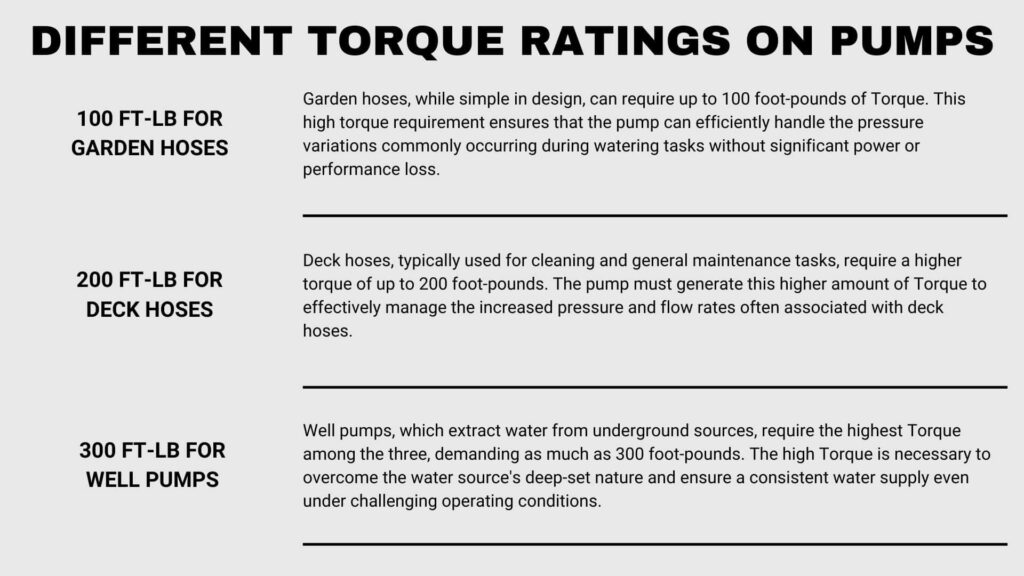
100 ft-lb for Garden Hoses
Garden hoses, while simple in design, can require up to 100 foot-pounds of Torque. This high torque requirement ensures that the pump can efficiently handle the pressure variations commonly occurring during watering tasks without significant power or performance loss.
200 ft-lb for Deck Hoses
Deck hoses, typically used for cleaning and general maintenance tasks, require a higher torque of up to 200 foot-pounds. The pump must generate this higher amount of Torque to effectively manage the increased pressure and flow rates often associated with deck hoses.
300 ft-lb for Well Pumps
Well pumps, which extract water from underground sources, require the highest Torque among the three, demanding as much as 300 foot-pounds. The high Torque is necessary to overcome the water source’s deep-set nature and ensure a consistent water supply even under challenging operating conditions.
Analyzing the Torque Requirement for Various Pumps
The operational efficiency of a hydraulic pump is intrinsically linked to its torque requirement. It becomes particularly significant in the case of larger pumps that necessitate more power to mobilize bigger loads. In this comprehensive overview, we delve into the torque requisites for various categories of hydraulic pumps and ascertain the power quotient they demand for effective functioning.
Below is a brief on the torque requirements for different types of pumps:
- Centrifugal Pump: Requires a torque ranging between 1,500 and 3,000 ft-lbs to operate efficiently.
- Reciprocating Pump: This type of pump demands a higher torque, generally falling within the 2,000 to 12,000 ft-lbs range.
- Piston Pump: The operational torque requirement for this pump varies from 500 to 5,000 ft-lbs.
Each of these pumps, with their specific torque requirements, indicates the extent of power they require to function optimally.
So, How Much Torque Does a Hydraulic Pump Need?
The functionality of hydraulic pumps is heavily reliant on their torque capacity. Essentially, the higher the Torque, the quicker the fluid mobilization and the greater the power generated. Typically, a baseline of 3,000 ft-lb (4,500 Nm) of Torque is necessary to initiate and sustain the operation of a hydraulic pump.
However, certain pump types demand even more substantial Torque for optimal performance. For instance, high-flow pumps, known for their rapid fluid movement, require a significant 6,000 ft-lb (8,700 Nm) of Torque for start-up and ongoing operation.
Measure Torque with DATAMYTE
DATAMYTE, a recognized industry leader in providing robust data collection and low-code quality management solutions, offers a range of torque products designed to enhance accuracy and efficiency in various manufacturing environments.
LightStar™ Torque Wrench
This precise torque-measuring instrument is designed to eliminate false readings that are difficult to detect. The LightStar™ Torque Wrench series technology sensor ensures that the operator can pull at any point on the wrench and will receive an accurate measurement.
DataMyte Torque Solution
This solution provides real-time reporting and torque data collection to improve and monitor Torque continuously. It’s a comprehensive system for managing all aspects of torque control, from data collection to analysis and reporting.
New Generation of Digital Torque Wrenches
DATAMYTE has introduced a new generation of their LightStar™ Carbon Fiber Torque Wrench. These digital torque wrenches offer improved performance and accuracy, making them ideal for demanding industrial applications.
These products are part of DATAMYTE’s commitment to providing quality management solutions that enhance actionable results based on collected production data. They are designed to ensure consistent, reliable torque application, improving the quality and reliability of assembled products. Book a demo with us now to see how we can help you achieve your torque accuracy goals.
Conclusion
Understanding hydraulic pump torque requirements is crucial for efficient operation and longevity. Different pump types necessitate varying amounts of Torque tailored to their operational demands. Always consult an expert or manufacturer for specific torque specifications to ensure optimal performance.

